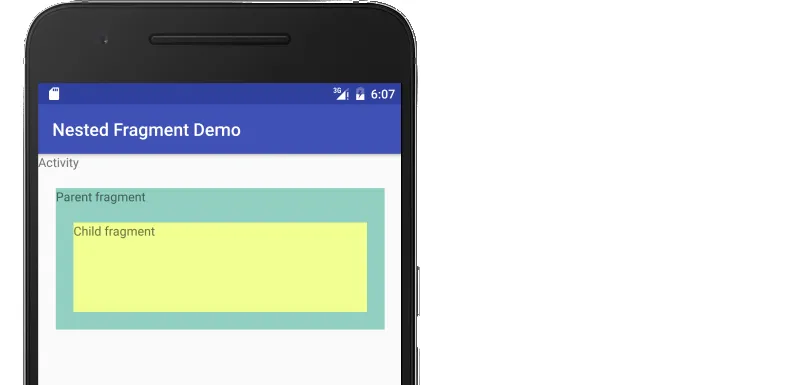我正在编写一款适用于4.0和4.1平板的应用程序,如果不需要,我不想使用支持库,而是只使用4.x API。
因此,我的目标平台非常明确:>= 4.0并且<= 4.1。
该应用具有多窗格布局(两个片段,一个小片段在左侧,一个内容片段在右侧),以及带有选项卡的操作栏。
类似于这样:
我现在想知道替换片段,特别是嵌套片段的最佳实践。ViewPager 是支持库的一部分,没有本机 4.x 的此类替代品。在我的意识中似乎已经过时了。 - http://developer.android.com/reference/android/support/v4/view/ViewPager.html 然后我阅读了 Android 4.2 的发行说明,涉及到 ChildFragmentManager,这将是一个很好的选择,但我正在针对 4.0 和 4.1,所以也无法使用它。
ChildFragmentManager 仅在 4.2 中可用。
所以我想知道:是否没有使用支持库和随之而来的所有内容就无法编写带有嵌套片段的4.1应用程序?(需要使用FragmentActivity而不是Fragment等)。或者什么是最佳实践?
我目前在开发中遇到的问题就是这个陈述: Android支持库现在也支持嵌套片段,因此您可以在Android 1.6及更高版本上实现嵌套片段设计。
注意:当布局包括时,您无法将布局填充到片段中。仅在动态添加到片段时支持嵌套片段。
由于我在XML中定义了嵌套片段,这显然会导致错误,如下所示:
目前,我得出结论:即使在4.1上,当我甚至不想针对2.x平台时,如屏幕截图所示的嵌套片段也无法在没有支持库的情况下实现。
(这可能实际上更像是一个维基条目而不是一个问题,但也许其他人之前已经成功了。)
更新:
有一个有用的答案在:Fragment Inside Fragment
因此,我的目标平台非常明确:>= 4.0并且<= 4.1。
该应用具有多窗格布局(两个片段,一个小片段在左侧,一个内容片段在右侧),以及带有选项卡的操作栏。
类似于这样:

我现在想知道替换片段,特别是嵌套片段的最佳实践。ViewPager 是支持库的一部分,没有本机 4.x 的此类替代品。在我的意识中似乎已经过时了。 - http://developer.android.com/reference/android/support/v4/view/ViewPager.html 然后我阅读了 Android 4.2 的发行说明,涉及到 ChildFragmentManager,这将是一个很好的选择,但我正在针对 4.0 和 4.1,所以也无法使用它。
ChildFragmentManager 仅在 4.2 中可用。
- http://developer.android.com/about/versions/android-4.2.html#NestedFragments
- http://developer.android.com/reference/android/app/Fragment.html#getChildFragmentManager()
所以我想知道:是否没有使用支持库和随之而来的所有内容就无法编写带有嵌套片段的4.1应用程序?(需要使用FragmentActivity而不是Fragment等)。或者什么是最佳实践?
我目前在开发中遇到的问题就是这个陈述: Android支持库现在也支持嵌套片段,因此您可以在Android 1.6及更高版本上实现嵌套片段设计。
注意:当布局包括时,您无法将布局填充到片段中。仅在动态添加到片段时支持嵌套片段。
由于我在XML中定义了嵌套片段,这显然会导致错误,如下所示:
Caused by: java.lang.IllegalArgumentException: Binary XML file line #15: Duplicate id 0x7f090009, tag frgCustomerList, or parent id 0x7f090008 with another fragment for de.xyz.is.android.fragment.CustomerListFragment_
目前,我得出结论:即使在4.1上,当我甚至不想针对2.x平台时,如屏幕截图所示的嵌套片段也无法在没有支持库的情况下实现。
(这可能实际上更像是一个维基条目而不是一个问题,但也许其他人之前已经成功了。)
更新:
有一个有用的答案在:Fragment Inside Fragment

ActionBar实现。请仔细查看ActionBarSherlock,如果有空间,它在ActionBar中具有选项卡。 - user